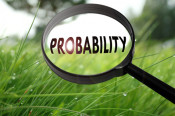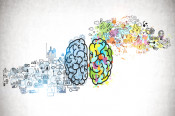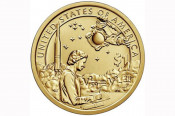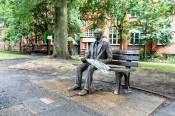Do you like to listen to music when you do homework? Somehow those math problems seem simpler to solve if you're bobbing your head to the latest beats. But how do you listen to that music? While some kids will plug headphones into their digital music player, others will turn the knob on a much older, yet still popular device. What are we talking about? The radio, of course!
Chances are your older friends and relatives have more experience with and memories of the radio. With millions of songs available via the Internet and the click of a mouse, we've grown accustomed to choosing exactly what we want to hear when we want to hear it.
Before the digital music revolution, that wasn't always the case. Years ago, your parents probably tuned their FM radios to their favorite station and danced along to whatever was playing, just waiting for their favorite song to be played.
One place many kids today experience the radio is in the family car. When you're driving to the store or to church, your parents may surf through the dial searching for a radio station that fits the mood. As they scroll through the dial, you may hear snippets of all sorts of stations, from hip hop and pop to country and local news.
Have you ever WONDERed why you can only hear one radio station at a time? If you're familiar with the basics of how radios work, you know that there are all sorts of invisible radio waves flying through the air all around you all the time. Your radio's antenna picks up those radio waves and channels them to electric circuits inside your radio that convert them into sounds you can hear.
With all sorts of radio waves flying through the air, why doesn't your radio sound like a mixture of all the stations out there broadcasting a signal? Instead of gibberish, you can tune into a single radio station amongst all those signals in the air thanks to the tuner inside your radio.
To understand how this works, it's important to understand that all radio waves are made up of three parts: wavelength, amplitude, and frequency. In this way, radio waves are much like ocean waves. Amplitude refers to the size of a wave, whereas frequency refers to how many waves arrive each second. Wavelength is the distance between wave peaks.
Frequency, for example, is measured in a unit called the hertz. If seven radio waves arrive every second, which would equal a frequency of seven hertz (7 Hz).
Unlike ocean waves, radio waves are much longer, faster, and frequent. The wavelength of radio waves is usually hundreds of yards, but their frequency can be millions of hertz. How can such long waves arrive in the millions each second? Because they travel incredibly fast at the speed of light!
Radio programs, whether musical or informational, are sent through the air via huge transmitter antennas. Programs are transmitted by adding them to a radio wave called a carrier. This is done through a process known as modulation.
There are two types of modulation used to transmit radio programs. If the program is added to the carrier in a way that causes fluctuations in the carrier's frequency, this is known as frequency modulation (FM). Alternatively, programs can be added to the carrier in a way that causes fluctuations in the size or amplitude of the carrier. This is known as amplitude modulation (AM).
When you surf through the radio dial, you'll notice there are two bands: AM and FM. These two bands differ in the type of modulation used to transmit the programs. If you tune in to a particular FM station, the tuner in your radio locks onto a specific frequency that allows you to hear only the station you want to hear and not all the others flying through the air!











Virah levi
ayonna
Kaylin
amiya
Wonderopolis
kmammy, rstorey, drewc
Wonderopolis
Sherri Manley
Wonderopolis
DeRpY-Chan
Wonderopolis
Sally
Wonderopolis